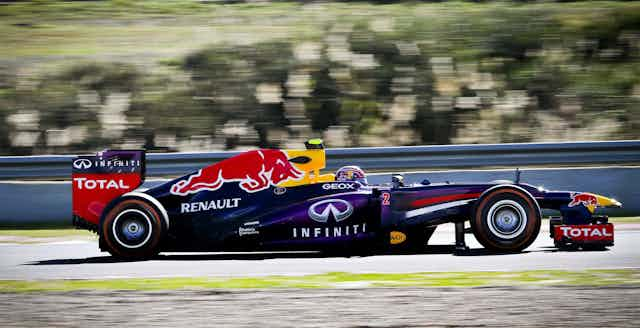The big race of the annual Australian Formula 1 Grand Prix is coming up this Sunday at Albert Park, Melbourne – and it marks the beginning of a new era as a new set of rules and regulations are adopted this season.
The new rules will have a massive impact on the main aspects of an F1 race: the way cars sound, drive and look.

Safety and fuel efficiency
This year, teams are only allowed to use 140L of fuel per race and the engine rev limit has been set at 15,000rpm (revolution per minute), as opposed to the 18,000rpm previously allowed.
Also, F1 is switching to 1.6L V6 engines (rather than V8 or V10). However, engine turbo has been allowed again (last used in 1988) which can spin up to 100,000rpm – and, of course, generates an amazing noise.

Car engines are now more reliant on hybrid technology, and F1 will look to reduce wasted energy.
The concept of a Kinetic Energy Recovery System (KERS) was introduced in 2009. It worked by harnessing waste energy (mostly heat) created under braking and transforming it into electricity, which could provide additional power for up to 6.67 seconds per lap.

Starting this year, teams will be using Energy Recovery Systems (ERS) which combine twice the power with a performance effect around ten times greater by harvesting waste heat energy from the rear brakes and the turbocharger to charge a battery pack that powers motors.
Teams are also only allowed to use five engines throughout the season before incurring a penalty (as opposed to eight engines last year) which makes reliability a high priority for F1 engineers.
The minimum weight of the car has increased from 642kg to 691kg (without fuel), the maximum fuel that a car can carry for a race is limited to 100kg (compared with around 150-160kg last year) and the fuel flow rate to the engine is restricted to 100kg/hr. There were no such limitations last year adding to the importance of the F1 teams’ strategic planning for each race in 2014.
A new look
The nose height has been dramatically reduced (from 550mm to 185mm) for safety purposes – mainly to prevent cars launching upwards in case they rear-end a racing car in front (see below for video of Mark Webber crashing in Valencia in 2010).
The lower nose design and narrower front wing results in a 20% reduction in downforce. The narrower front wing was put in place for safety purposes to reduce punctures caused by end plates damaging competitor’s tyres (which typically happens at the start of the race when all cars barrel into the first corner).
Teams can try to regain lost downforce by redesigning rear suspension elements. This is one of many challenges each team will face and it will be interesting how each team reacts.
Why F1 racing matters to all of us

The new rules imposed on F1 teams this year are to be considered as part of the larger shift in the automotive industry. As increasingly tight government regulations around car emissions are introduced in Europe and the US, Formula 1 is once again placing itself to be a vehicle for innovation that could trickle down to commercial cars.
Some of the technological advances that we take for granted today were inherited from car racing – such as innovations in suspensions, disc brakes, automatic transmissions, engine efficiency, materials selection and design and safety.
After four years of Red Bull-dominated Formula 1, the 2014 rules have already brought a new direction to the sport. Let’s hope the teams capitalise on these changes.

